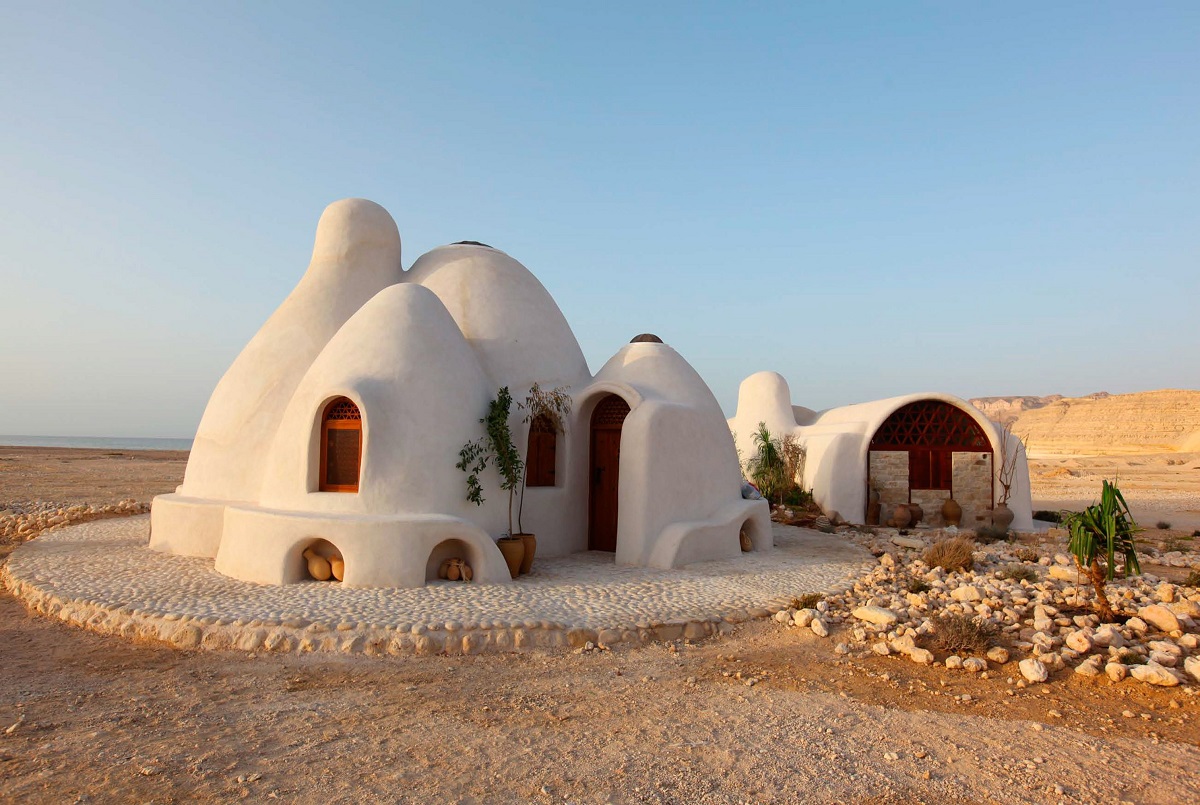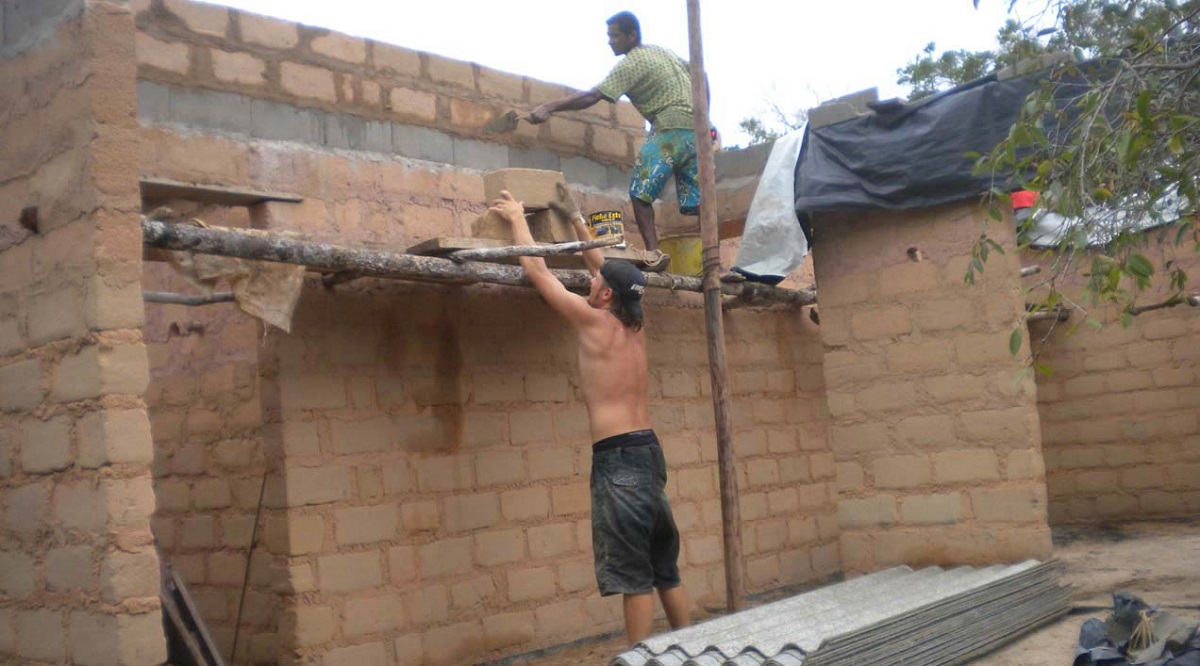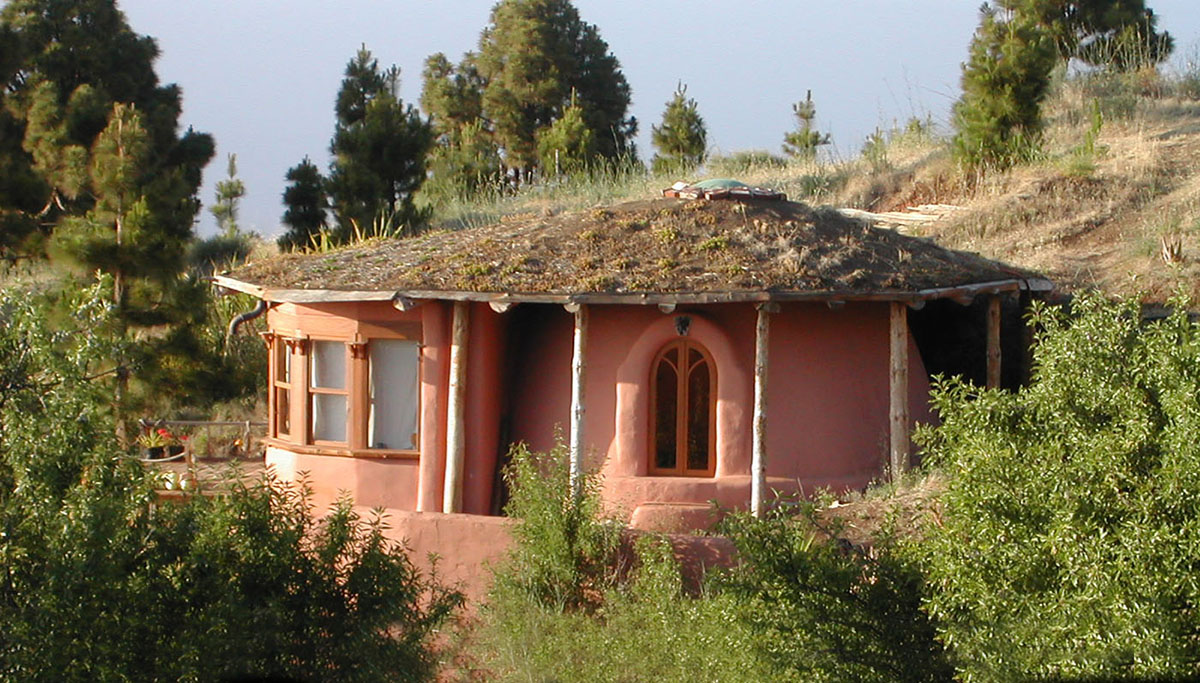
Building an adobe house is one of the best options to build an ecological house. Adobe is of natural origin and is a sustainable material that is easy to apply. From the point of view of sustainable construction, the benefits of this type of housing increase when considering its environmental, social and economic advantages. Learn how to build an adobe house it may be easier than it seems.
Therefore, in this article we are going to tell you how to build an adobe house, what its characteristics are and what advantages this type of ecological housing has.
How adobe bricks are made

Adobe is made from a mixture of clay, sand and straw or other fibers, this grout is formed and dried in a mold in the sun, giving the bricks that are used to build walls and walls. The process of creating these blocks can be done completely natural using brick-shaped wooden molds. The clay blocks are placed in these molds and the newly made blocks are left to air dry.
When a house is traditionally built of adobe, the interior structure is usually made of wood. However, we can also find adobe houses with iron structures, since adobe is a material that can be easily adapted to any other material.
These materials usually come from nature. In addition to being infinite, they can be found in the same work, so shipping costs are also saved. The adobe manufacturing process does not require specialized labor, it is enough to know its properties and the quantities required to achieve an adequate mixture of its components.
As we can see, this is a completely natural construction process. Energy costs are greatly reduced by eliminating the need for active machines.
Characteristics of adobe houses

Adobe houses are constructions that have been part of human history for thousands of years. These houses are characterized by using adobe as the main material for their construction.
One of the main advantages of adobe houses is their ability to maintain a cool environment in hot climates and a warm environment in cold climates. This is due to the thermal properties of adobe, which acts as a natural insulator, avoiding sudden changes in temperature inside the home.
In addition, the construction of adobe houses is a sustainable and environmentally friendly technique, since it is an abundant and accessible material, since it is mainly made up of earth and sand, and its production requires less energy consumption compared to other Construction materials.
Adobe houses are also known for their aesthetic beauty and their integration with the natural environment. The rustic appearance and the earthy texture of the adobe give them a special charm that distinguishes them from other more modern constructions.
Although adobe houses have been part of the history of many cultures around the world, today their construction it has become less common due to the adoption of more modern materials and construction techniques. However, in some regions, adobe houses are still used, either for their historical or cultural value or for the advantages they offer in terms of sustainability and energy efficiency.
How to build an adobe house

It starts with the foundation. Adobe green houses generally do not have a basement, and the foundation can be made of stone or other locally available materials. The adobe is separated from the foundation by a concrete or brick plinth at least 50 cm high.
Generally, to build an adobe house, the walls must be thicker than normal for their structural resistance and seismic movement. This is how we also make sure that it maintains the thermal performance of the interior of the house.
There are two ways to mount these walls. Tailing is a brick laying technique so we can leave the head side exposed, creating a wall as wide as the length of your bricks. Due to its thermal inertia, it can be used in load-bearing structures or facades.
With a corded drill, where the bricks are laid lengthwise, leaving only the long sides of the bricks exposed, the walls will be thinner based on the width of the bricks. It is mainly used on interior walls due to its ability to save space.
The commonly used wooden beams have a minimum thickness of 15 cm and in the case of concrete beams a maximum thickness of two thirds of the width of the wall, filling the rest with mud to avoid thermal bridges.
As for the type of mortar to set the bricks in, grout works best because it has the same shrinkage and expansion properties as bricks. The mortar must be wet before being applied between blocks to avoid cracking when it dries. Place the pipes inside the wall and protect them with brick or plastic.
Regarding windows and doors, it is recommended to have holes at a minimum distance of 45 cm from the corners, with beams 30 cm long and a minimum distance of 1 m between them. There should not be too many of them, as this will weaken the structure.
The roofs of adobe houses traditionally vary by location. They are usually made of wood, laid flat but not level, and the horizontal joists are covered with other materials.
The next step is to choose a coating. Builders often protect adobe walls with a finish of mud, lime, lime plaster, or cement stucco. Finally, if we wish, we can paint the walls with lime paint that contains natural pigments to improve its appearance.
Advantages of using Adobe
There are several advantages to using adobe in home construction. First, the ecological adobe house has thermal inertia. The thickness of their walls allows them to reduce the temperature variations from outside, thus creating a pleasant interior environment throughout the year.
Not only that, but also acts as a soundproofing material, forming an acoustic barrier. In addition, adobe also has good resistance to fire and insects. It also allows you to easily modify your build. New water, electricity or communication services can be easily and inexpensively installed in the wall.
Finally, the original structure of the old building is respected through the use of adobe for the transformation, and the blocks are recycled. A practical example of how adobe houses are built in Spain is the small town of Ávila, which uses dozens of demolished adobe buildings to reuse these resources and increase its population.
I hope that with this information you can learn more about how to build an adobe house and what its advantages are.